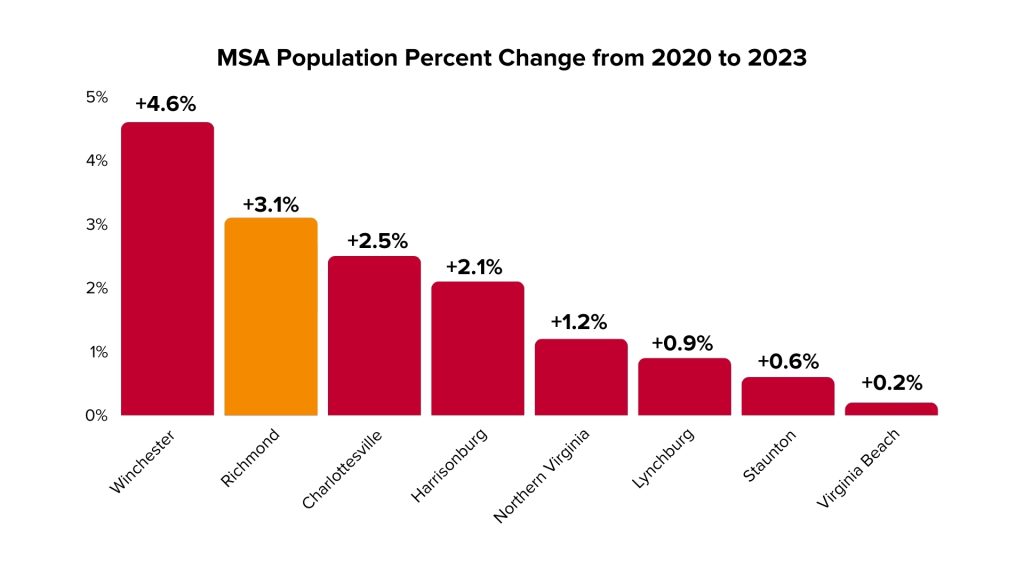
News
Blog | 2 min read
February 13, 2024

The Richmond MSA is fueling Virginia’s largest population growth over the past three years according to University of Virginia’s Weldon Cooper Center. The center publishes population estimates for Virginia’s 11 metro areas as well as the localities within them. Since 2020, Virginia has gained 84,305 residents and of that gain, 40,200 individuals, or 48 percent, relocated to the Richmond MSA.
The Richmond MSA came in second for total percent growth at 3.1 percent, narrowly trailing the 4.6 percent increase in Winchester, a community 75 miles west of Washington, D.C. Despite Northern Virginia having twice the population, the Richmond MSA’s gain exceeded Northern Virginia’s by 4,600 people. Continuing the trend of the Richmond MSA spearheading population growth, Greater Richmond’s average daily population increase also surpassed Northern Virginia’s average, with 34 residents per day compared to Northern Virginia’s 30.

The City of Richmond and counties of Chesterfield, Hanover and Henrico — the four localities that comprise Greater Richmond — have seen an increase of 34,156 residents, accounting for 41 percent of statewide population growth.
Chesterfield County leads Virginia’s 133 counties and cities with more than 23,100 additional residents, vastly outpacing second-place Loudon County which gained nearly 13,000 residents. Chesterfield’s population increase of 20 net new people per day was nearly twice the average of Loudon County, which gained 11 new residents daily. Richmond’s rural counties of New Kent and Goochland led the state in terms of percent growth since 2020, coming in first and second place.
Throughout the last few years, data has revealed a trend of people moving away from major metros like Washington, D.C., for small to mid-sized regions like Greater Richmond in search of affordability and a high quality of life.
New residents choose Greater Richmond for its affordability and superior quality of life in addition to the region’s abundant economic opportunities. The overall cost of living index is nearly four points below the national average and housing costs are nearly 17 points below the national average. As housing prices continue to skyrocket throughout the nation, Greater Richmond bucks the curve with its affordability.